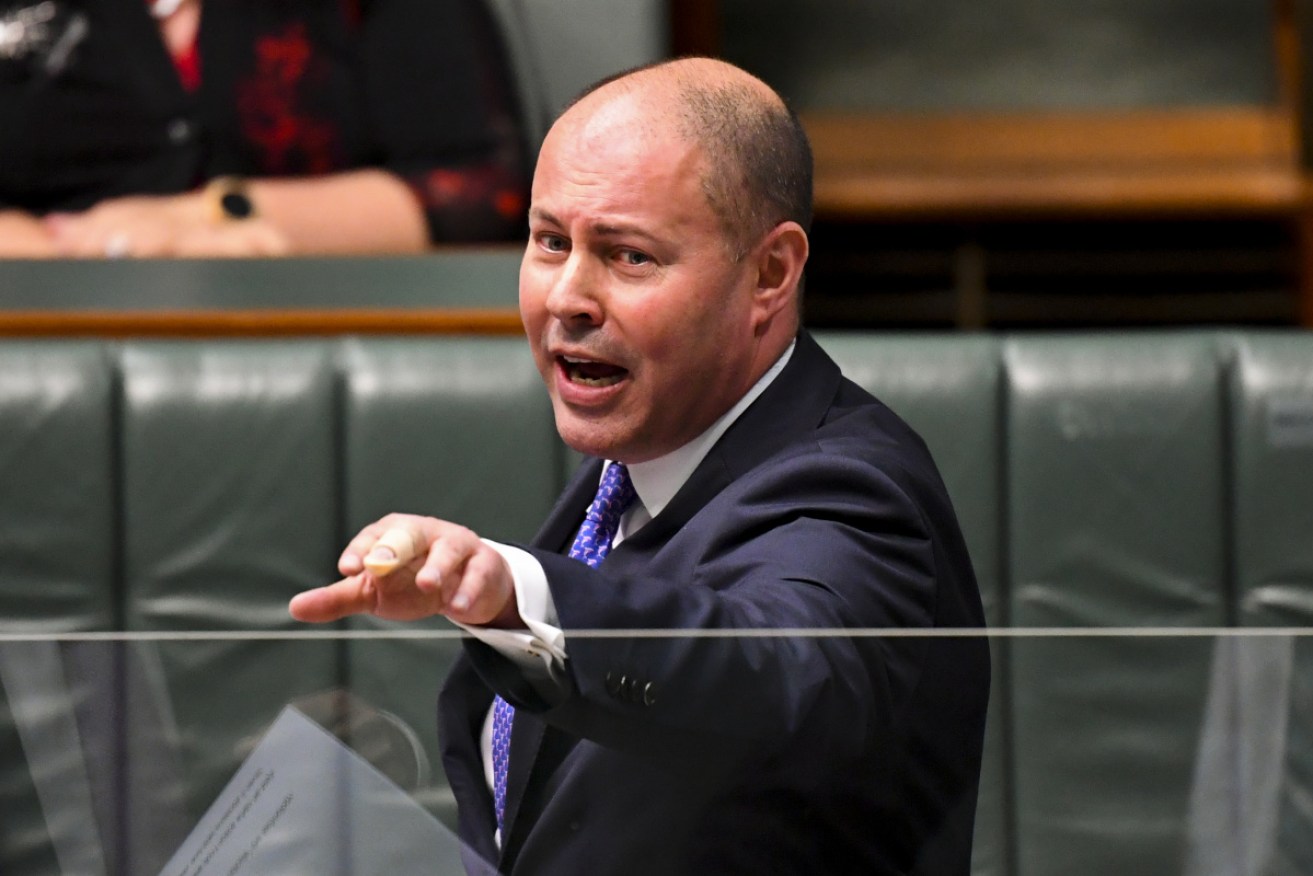Explained: Australia mulls Bitcoin crackdown and new digital currency


Treasurer Josh Frydenberg has flagged the biggest overhaul of payments laws in two decades. AAP
Australians who invest in cryptocurrencies like Bitcoin may enjoy new protections under a federal government overhaul of tech regulations.
Treasurer Josh Frydenberg said on Wednesday that Australia’s laws are failing to keep up with a “revolution” in financial technology and that the government plans to legislate the largest payments reforms in 25 years.
In an address to the Australia-Israel Chamber of Commerce, Mr Frydenberg teased a “crypto-asset reform plan” and said Australia will consider creating its own central bank digital currency (CBDC).
Other reforms to crack down on buy now, pay later companies like Afterpay will also be pursued, reflecting a move away from traditional credit cards.
“Without reform, Australian businesses and consumers could increasingly transact in environments that are largely unregulated from an Australian perspective, with any rules in play instead determined by foreign governments and large multinationals, including tech giants,” Mr Frydenberg said.
Crypto custody regime considered
Although Mr Frydenberg’s speech was ambitious, it was light on policy detail as government agencies are not due to report back on the feasibility of a CBDC until the end of 2022.
That said, the government is expected to draw on a select committee report tabled in October, which recommended establishing a licensing regime for digital currency exchanges and a custody regime for cryptocurrency assets.
Mr Frydenberg said on Wednesday that the government will consider such a custody regime to protect Australians trading digital currencies like Bitcoin on exchanges.
A custody regime would introduce a regulated framework to ensure that customers don’t lose or have their cryptocurrency stolen by exchanges.
It comes after the recent collapse of several notable exchanges, with MyCryptoWallet appointing liquidators on Tuesday, leaving thousands of investors out of pocket.
About 21 per cent of Australians own cryptocurrencies, according to Finder survey data, while a further 13 per cent have said they intend to buy a digital currency within a year.
Australia considers central bank digital currency
Mr Frydenberg confirmed on Wednesday that Australia may adopt a CBDC using the Ethereum network.
It came as the Reserve Bank released a long-awaited report into CBDCs, finding a wholesale digital currency could make the nuts and bolts that sit underneath Australia’s payment system more efficient.
But the RBA found the case for a CBDC is still unclear in Australia.
So, what exactly is a CBDC, and what does it mean for Australians?
A central bank digital currency is similar to cryptocurrencies like Bitcoin in some ways, but very different in others.
Like Bitcoin, a CBDC is a currency that can be held in a digital wallet.
And unlike existing digital payments, a bank or financial services provider does not necessarily need to be involved, meaning the RBA could theoretically issue currency directly to Australian households.
But unlike Bitcoin, which is run on a decentralised blockchain network, CBDCs are issued by central banks and backed by government.
They are also much less volatile because they’re pegged to the value of existing currencies, which in the RBA’s case is the Australian dollar.
More than 80 governments around the world are considering introducing CBDCs, but no central banks have implemented one to date.
CBDCs are like ‘digital cash’
Professor Ellie Rennie, an expert in digital currencies at RMIT University, said these central authorities maintain software networks and security.
“A CBDC is still centralised and managed by a reserve bank, whereas cryptocurrencies exist independently of that authority (so-called private money),” Professor Rennie said.
“A CBDC is best thought of as ‘digital cash’, as cash is money that is also issued by a central bank and which can be held by a person without needing a bank or other financial service (as is required with electronic payments).”
Mr Frydenberg said Australia will look into developing a retail CBDC by the end of 2022, while the Board of Taxation will also be asked to look at the tax settings sitting around cryptocurrency more broadly.
“Australia has an opportunity to be among the leading countries in the world in leveraging this new technology,” Mr Frydenberg said.
It’s worth noting that the CBDC the RBA is considering is wholesale, meaning it won’t necessarily have big implications for consumers.
The RBA said on Wednesday that a CBDC could create “significant efficiency gains and reduce operational risk by replacing highly manual and paper-based processes”.
But such a currency isn’t necessarily desirable in Australia, it concluded.
“The project has also highlighted a range of additional questions and issues that need to be explored to help address the question of whether there is a case for a wholesale CBDC,” the Reserve Bank report said.








